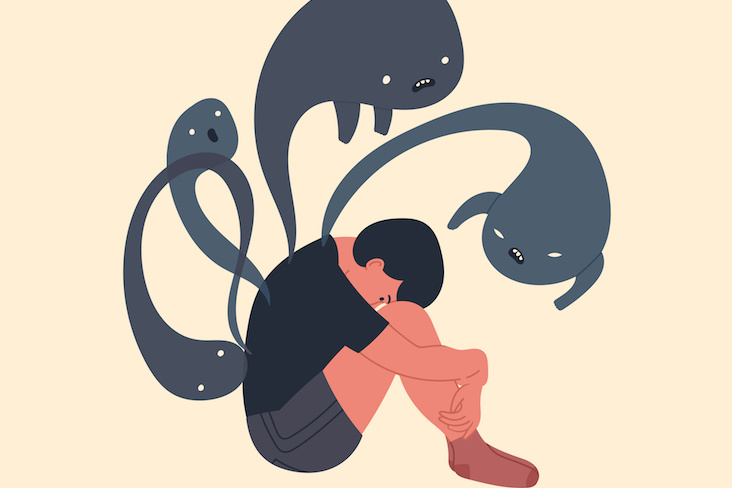
Two years ago, summer began on the heels of my 11-year-old daughter thankfully finishing the school year. Jamie returned to school mid-year after missing months due to major depressive disorder and anxiety.
I took family medical leave to care for her after this crushing diagnosis. Coordinating with her psychiatrist, therapist and school administration, we crafted a solid plan to get her back into school. Along with medication and therapy, I thought she was getting better. We hosted a “welcome back party” with her friends and the sleepovers started anew. By the end of the school year, she was happy and ready to be a pre-teen.
The First Episode
One morning, I found my daughter in her room with a fixed gaze. Jamie stared into space looking at something and nothing at the same time. My instinct detected the signs of a potential depressive episode, but what was happening was more than I realized. Jamie couldn’t be coaxed out of her room. I asked her to join me on a walk with our Chihuahua, and she refused. She said, “It wasn’t safe” and couldn’t say why. Jamie’s eyes swept back and forth as if she could see something I couldn’t. This was different than depression, and I was afraid for my child.
Jamie’s body was limp and curled into a fetal position on her bed. She let me come closer, and I reached out to embrace her. I hoped my presence would soothe her. Gently, I asked Jamie to describe what she was seeing, and she said, “Can’t you see them Mama? They’re all up there.” She pointed to the ceiling and said, “They’re laughing at me. Stop making fun of me!” Shaken and teary-eyed, she covered her ears. I couldn’t breathe. I was overtaken by fear. What was happening wasn’t a quick Google search or a call to the nurse line. This was something I hadn’t seen before. Later I learned what happened to Jamie is a first episode of psychosis (FEP).
Immediately I called her psychiatrist, affectionately known as “Doctor D,” to discuss this new symptom. He became concerned and told me there may be other prodromal signs. Prodromal signs or symptoms indicate the onset of a disease. Worried about the comorbidities of dyslexia and ADHD, I asked if this was the start of bipolar disorder or schizophrenia. He shied away from making the call. Innately a conservative provider, Doctor D was cautious not to make a premature diagnosis. As doctor Mom — the healer of scrapes, burns and rashes — I wanted a balm for this new thing in our lives. I understood Doctor D’s approach, however, I knew Jamie needed more help than I could provide.
The Second Episode
On a relatively normal afternoon, I was doing laundry in the basement when Jamie’s scream rang through the house. She screamed like I’ve never heard before; her toddler tantrums paled in comparison. I found her naked in our hall closet. I’m not sure what set her off. Perhaps she became overstimulated from the kids outside or the everyday sounds from lawnmowers and trash trucks. Either way, she flipped out. Her screams were primal and rising in cadence every second.
My first thought was “What will the neighbors think?” Sadly, this mindset is predominant in families with loved ones living with mental illness. You want to shield your family, and especially your child, from prying eyes. Jamie continued to scream, “no” over and over. I slid down the wall to sit by the closet door. We sang silly songs until she calmed down. A mother’s touch is healing, so I gently rocked her. Tears flowed from the depths of her soul. I could feel her fear. I wept alongside her. After persuading Jamie to nap, I called the doctor; we agreed I could no longer manage her symptoms. I took her to the ER that night.
My hope for her hospitalization was getting a second opinion on her case. Unfortunately, I created expectations the hospital couldn’t meet. Hospitals seek to stabilize children, support the crisis with therapy and make medication recommendations. In our case, Jamie stabilized in five days, received some therapy and no new medication. Her attending physician agreed with her psychiatrist’s diagnosis and encouraged her to go back to school in the fall.
I was dumbfounded that her psychosis was not an immediate cause for concern. There was pressure to get her back into school to regain normalcy. My child was hurting — she was lost. No one thought there was a problem. Maternal rage flooded me; how dare they tie up her $50,000 hospital stay with a pat on the head? It was evident she wasn’t going to be ready for school anytime soon. Jamie needed wraparound services to help her survive day-to-day.
Our family is facing a monster we’ve never seen. Getting your child the right treatment, diagnosis and medication can make all the difference. We’re still at the beginning of our journey; Jamie is now receiving services which could change her life tremendously. While there’s still a long road ahead of us, we’re hopeful for recovery.
Brittany Miles is a graduate of Williams College and a Product Development Consultant specializing in E-commerce. She has worked for Microsoft – Outlook Calendar, Starbucks and T-Mobile crafting the customer interfaces we use on a daily basis. She is also the host of Miles to Go with Brittany Miles on the number one rated The Transformation Talk Radio Network. Brittany volunteers for the National Alliance on Mental Illness in public policy and advocacy. She is the mother to her 13-year-old daughter and lives in Seattle.